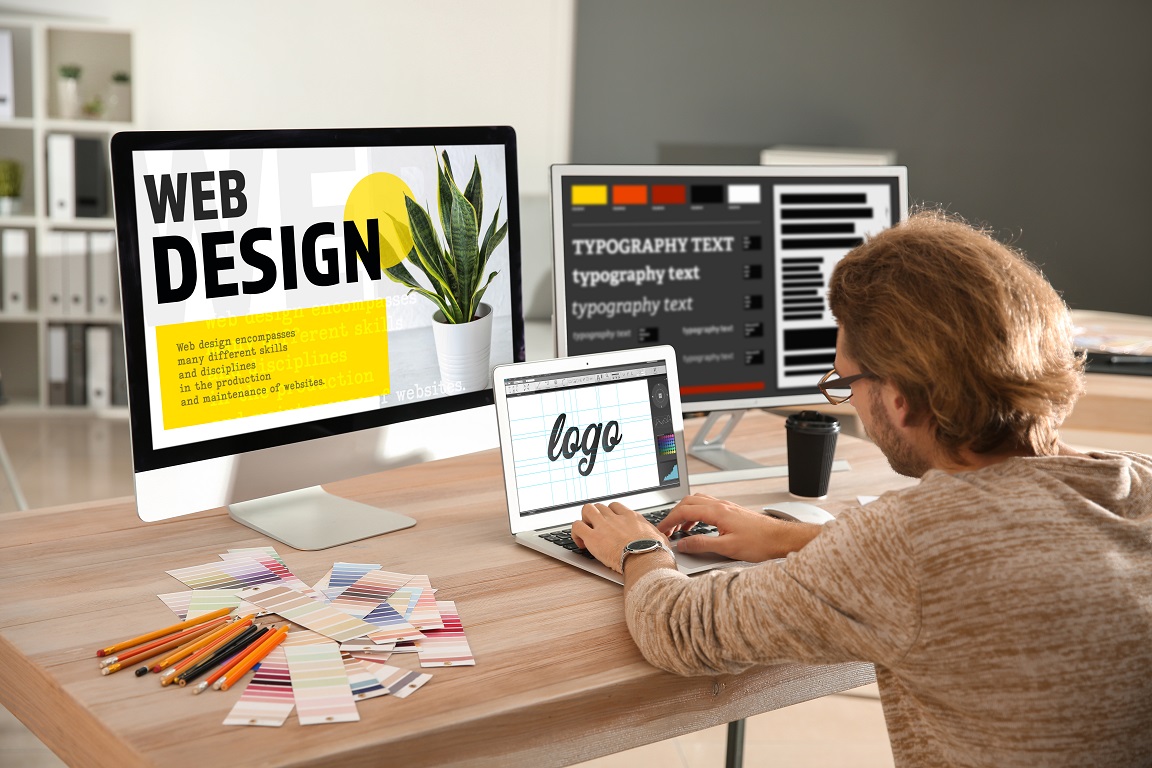Opening the Tricks to Outstanding Web Design for Your Service
Opening the Tricks to Outstanding Web Design for Your Service
Blog Article
A Comprehensive Introduction of the Ideal Practices in Web Layout for Creating Instinctive and Accessible Online Platforms
The effectiveness of an online platform pivots dramatically on its design, which need to not only attract users but additionally lead them effortlessly with their experience. Understanding these concepts is essential for designers and developers alike, as they straight impact individual fulfillment and retention.
Recognizing Customer Experience
Recognizing customer experience (UX) is crucial in website design, as it straight influences just how visitors interact with an internet site. A properly designed UX guarantees that individuals can browse a site without effort, gain access to the info they seek, and full desired activities, such as making an acquisition or signing up for a newsletter.
Use focuses on the simplicity with which customers can complete tasks on the website. Availability ensures that all users, including those with handicaps, can communicate with the website successfully.
Aesthetics play an essential role in UX, as visually appealing styles can boost customer fulfillment and interaction. Color design, typography, and imagery must be attentively picked to develop a natural brand name identity while additionally facilitating readability and comprehension.
Inevitably, focusing on user experience in web design fosters greater individual satisfaction, encourages repeat visits, and can considerably improve conversion prices, making it a basic facet of effective electronic strategies. (web design)
Importance of Responsive Layout
Responsive style is an important part of modern web development, ensuring that websites supply an ideal watching experience across a variety of devices, from desktops to smartphones. As user habits progressively shifts towards mobile browsing, the requirement for internet sites to adapt flawlessly to various display dimensions has actually come to be paramount. This adaptability not just improves usability yet additionally dramatically effects customer interaction and retention.
A receptive style uses liquid grids, versatile images, and media queries, permitting a natural experience that maintains performance and visual integrity no matter tool. This method removes the requirement for customers to zoom in or scroll horizontally, leading to an extra user-friendly communication with the material.
Moreover, internet search engine, significantly Google, focus on mobile-friendly sites in their rankings, making receptive design important for preserving exposure and availability. By adopting responsive style concepts, companies can get to a more comprehensive audience and enhance conversion prices, as individuals are more probable to involve with a website that uses a regular and smooth experience. Eventually, responsive design is not just a visual option; it is a strategic requirement that mirrors a dedication to user-centered layout in today's digital landscape.
Simplifying Navigation Structures
A well-structured navigation system is essential for enhancing the customer experience on any web site. Simplifying navigation structures not only help customers in locating details promptly yet additionally fosters engagement and minimizes bounce prices. To accomplish this, web developers ought to focus on clarity via using uncomplicated tags and categories that mirror the material accurately.

Including a search attribute additionally improves use, allowing individuals to locate content directly. In addition, carrying out breadcrumb trails can supply users with context concerning their place within the site, advertising convenience of navigating.
Mobile optimization is another vital facet; navigation ought to be touch-friendly, with plainly defined links and buttons to fit smaller displays. By lessening the variety of clicks needed to access material and guaranteeing that navigation is constant throughout all pages, designers can produce a seamless individual experience that encourages exploration and reduces irritation.
Prioritizing Availability Standards
Roughly 15% of the global population experiences some type of handicap, making it vital for web designers to prioritize availability requirements in their projects. Access incorporates different facets, consisting of aesthetic, auditory, cognitive, and electric motor problems. By adhering to established guidelines, such as the Internet Content Availability Guidelines (WCAG), developers can produce inclusive electronic experiences that cater to all individuals.
One fundamental method is to ensure that all content is perceivable. This includes giving alternative message for pictures and guaranteeing that videos have transcripts or captions. Key-board navigability is vital, as lots of users count on key-board shortcuts instead than computer mouse communications.
 Furthermore, shade contrast need to be meticulously taken into consideration to suit people with aesthetic disabilities, guaranteeing that message is legible versus its background. When designing forms, labels and mistake messages have to be clear and detailed to aid users in finishing jobs successfully.
Furthermore, shade contrast need to be meticulously taken into consideration to suit people with aesthetic disabilities, guaranteeing that message is legible versus its background. When designing forms, labels and mistake messages have to be clear and detailed to aid users in finishing jobs successfully.Lastly, performing functionality screening with people that have disabilities more tips here can offer important insights - web design. By prioritizing ease of access, web designers not only follow legal standards yet likewise expand their audience reach, cultivating a more inclusive on the internet environment. This commitment to access is essential for a user-friendly and truly navigable internet experience
Using Visual Pecking Order
Quality in design is vital, and using visual power structure plays an essential function in attaining it. Visual pecking order refers to the plan and presentation of components in a way that plainly indicates their value and overviews user focus. By strategically employing dimension, comparison, spacing, and shade, developers can create an all-natural flow that routes customers through the material perfectly.
Using bigger font styles for headings and smaller ones for body text develops a clear distinction in between sections. In addition, using bold colors or contrasting backgrounds can accentuate vital details, such as call-to-action switches. White area is equally crucial; it aids to prevent mess and allows individuals to concentrate on the most essential elements, boosting readability and overall individual experience.
Another key facet of aesthetic hierarchy is using imagery. Relevant images can enhance understanding and retention of information while likewise damaging up text to make web content extra digestible. Ultimately, a well-executed aesthetic power structure not just boosts navigating however additionally promotes an instinctive interaction with the site, making it most likely for customers to accomplish their goals efficiently.
Verdict

In recap, visit this page adherence to finest methods in web design is vital for developing accessible and user-friendly on-line systems. Stressing receptive style, simplified navigating, and availability standards fosters a straightforward and inclusive setting. Additionally, the effective use of visual power structure improves customer engagement and readability. By prioritizing these components, web developers can considerably enhance individual experience, making sure that on-line systems meet the diverse demands of all individuals while helping with reliable interaction and complete satisfaction.
The efficiency of an online system pivots dramatically on its layout, which his explanation need to not just draw in customers but also guide them flawlessly with their experience. By adopting responsive style concepts, services can reach a more comprehensive target market and boost conversion rates, as customers are more likely to engage with a website that offers a consistent and smooth experience. By sticking to developed standards, such as the Web Content Accessibility Guidelines (WCAG), developers can create inclusive electronic experiences that cater to all customers.
White room is just as necessary; it assists to avoid mess and allows users to focus on the most essential elements, boosting readability and general individual experience.
By prioritizing these aspects, web designers can considerably enhance user experience, making sure that on-line platforms fulfill the varied demands of all customers while helping with reliable communication and satisfaction.
Report this page